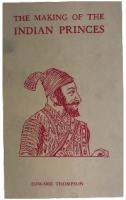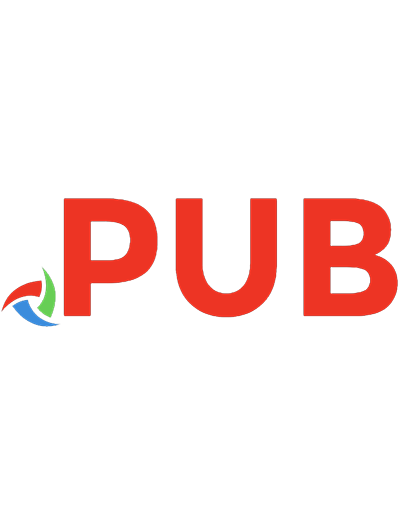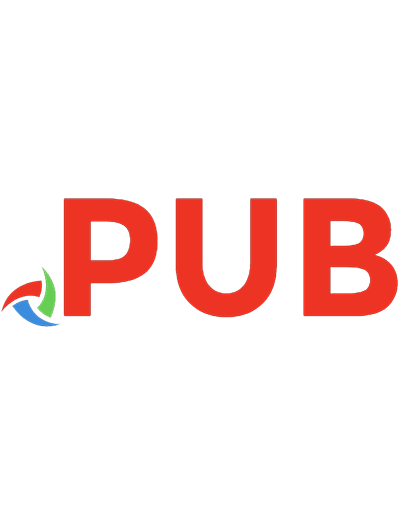Princes, Poets & Paladins: Islamic and Indian Paintings from the Collection of Prince and Princess Sadruddin Aga Khan
Since the 1950s Prince and Princess Sadruddin Aga Khan have collected Islamic and Indian paintings and drawings, includi
489 23 22MB
English Pages 192 [191]
Polecaj historie
Citation preview
PRINCES , POETS & PALADINS Islamic and Indian paintings from the collection of Prince and Princess Sadruddin Aga Khan
Sheila
~anby
Published for the Trustees of the British Museum by British Museum Press
Digitized by
Google
Original from
UNIVERSITY OF MICHIGAN
. Google
UNIVERSITY OF MICHIGAN
Thrt Trvsccn of the BOtish Mllkum Sftttfully acknowk:dgc 1ht genottOU$ suppon of tht Pnn« and Priocus Sa.druddin A,p Kh.an and o( rht Atniar World of lsl.am Trus-.
ThiJ ca1:1~ue is publisho:I in as.sod.It.on with a n tlllhibition at tbt British Mu..seum, London, from
11
January to
11
April 1998,
at t he Anhur M . Sad.kr Museum, Harvard Univer1hy AM Mu.s.eums, Cambridge, MA, from May to Augu•t 1998, at the Muteum Rkcberg, Zurich, from September 1998 10 J1nu1ry 19'9, and ar the MusCt d'art tt d'hk coire, Cmcva,, &om Scpttmber 1999 10 J1n1.1aty 2000. fron1ifpt«r.1lw: story of Hahv.ad and tk worm' (cat. no. a.,)
F,
11 q_
NL)
.3.2.37 ·C3t;;' /
/"J9&
0 1"1 TM TtuJW$ki and Tr:renc;e Mi;lnemey on many OCC2sions: wi.th rudimcnt.ary questions on lndian p.ainting. Likewi&c:. Micha.cl Rogcn was extteimly helpful --;th my Turkish queries. and Shreve Simpson, Massoumeh farhad and Tom Len12 all indulged me with discussion of the Pcnian paintings. I am grateful to my family fot neither dwelling on the catalogue nor impeding me from doing so. If pre:s.sutts of rime have led to the omission of references and the commiss.ion of errors, ma culpa. On the other hand, wha.tever is worthwhile in the text of this c:i.ta.logue could not have bttn achieved without the Mlp of my colle~cs. The exhibition and catalogue haYe been nude: possible through grants from the Altajir World of 1$1a.m Trust and Prince and Princess Sad.ruddin Aga Khan. I would like to extend my thanks to Alistair Duncan, Exei;utive OirectOf of the Altajir World of lslani Trust, whose unflagging suppoct of Islamic c:ulrural programmes has so enriched (jfe in the United Kingdom sin« r976. Finally, I must express my deep gratitude: to Prince and Princess Sadruddin Aga Khan for their gene:rosity in lending their extraordinary collection to the British Museum and allowing me: to catalogue it. Prince Sadruddin's equanimity and kindness, on the one b:i.nd, and his profound a.pprecillition of lsWnic and Indian p:i.intin.g, on the ot-her, M.ve been the inspiration for this exhibition and itS catalogue.
Original from
UNIVERSITY OF MICHIGAN
"
INTRODUCTION
The 145 pa.innng:s discussed in th.is catalogue S(.rve as touctmoncs ro specific momenn: and plact$ in the history of Iran, T urkey and India. The earliest works presented here were produced for anonymous patrons in 14th·ccntury Ir.an and demonstrate how Pers~an an:im adapted the practice of rMnuscript illusrrarion to the embeJlishmenr of t heir national epic, t he Sh4bnama (Book of Kings) of Firdau.si.
Although the rr.adirion of illustrating scientific manuscripts 211d books of fables had flourished at t he Anh couru of the Middle East, essentially as an outgrowth of the 6yz;antine tradition, rhc evidence for an unbroken chain of illustrated
manuscriptt in Iran from pre·l$1amic (pre·71h cenrury) ro JI. Klwlid (13th-14th c~tury) times is elusive at best. None
the lcu, the legend of Mani, the greatest p.ainte.r of Pc-rs:ian antiquiry, surYived to furnish an archetypal $tandard against which later artists couJd be measured. In the late 14th and early t sth ccnrury politic.al control in lran passed ro Timur (Tamcrlane) and his heirs, the Timurids, and the capital moved from Tabrii. in the west to Samarkand and He-rat in t he cast. The production of detu.xe boob and the process of creating designs for a who le range of utilitarian obt«cs became centralised to a greater extent than previously in workshops connected with the coum of the Timurid sultans and their sons. This resulted in a high level of uniformiry in the dccorarive aru, ~·hich went hand in hand with an incrHSing historical awareness of the succession of calligraphen and artists who had la.id the foundation for t he sryles and met hods o( the Timurid era. The system of mastCJ$ and students, who in rime became masters themselves, paralleled that of orhet walks o f life as well a,, the practice of Sufi pin, or mystical spirirual leader$, and their murid$., or adepts. Although a vigorous school of painting developed under t he Turkman rulers of western Iran in the second half of the isth century, the librarians and historian$ of late 1 sth· and 16th·ccnrury Iran emphasised the debt" of their contemporaries to their Timurid forerunncn rather than to the-Turkman artists to whom in some cases they were more closely related by blood and geography. In rso1 a new dynasry, the Safavids, came to power in Iran, and t heir first king, Shah lsma"il l, succeeded in reuniting the ea.stem and western hal ves of the country. Thus Timurid Herat fell to t he Safavids, who had esublis.hed t heir capital at T abriz. In addition to political domination t he Sabvids imposed Shiite Islam as the state religion, thereby distingui$hing t heir rtgime from th0$C of their rivals, the Onoman Turks and the lhbtks, on religious a.1 well as linguistic and governme-ntal grounds. Although Shah
Tahmasp, who su«eeded Shah lsma'il, bad to contend with numerous military setbacks at rhe hands of the Orromans and Uzbeks as ~·ell as ttibal strife wirhin Iran, his reign (is:r.4- 76) proved exception.ally beneficial for the arts of the book. His patronage of an opulent Shalmama with 158 illustrations, of which six of the finesr a.re presented here (cat. nos 1-..C-9), provided a proving ground for CY.'o genera1ions of court painters. M in t he Tlmurid period, political uniry led ro a migration of :artists to t he capital, indudi.ng Bihz.ad, the paragon of late Timurid Henri painting, in the 1 s aos. Although ht does not appear to have contributed illustrations to Shah Tahm.asp's major manuscripts, his influence is evident in rhe wor·k of many Tabriz artist$, whose preci5e1 spatially logical compositions and cool paJene reAea the ex.ample of the Herat master. Likewise, the most gifted T abriz arrisu. such as Sultan Muhammad, produced illustrations unsurpassed in rhe-ir colouriStic intensiry, the rhythm of their compo$ition and their joyful spirirualiry. As a result. 16th-century his1ori:1ins not only recognised Sultan Muhammad as a remarkable artist but .also_, almost uniquely in the hi.storiography of Iranian art, singled out his painting o( che 'Court o( Gayumars' (cat. no. t.s) as an exceptional picture. In the mid 16th ce-ntury Shah T ahmasp lost interest in rhe am of che book, releasing most of his artisu to the patronage of his brothers and nephews. However, somcwerc drawn to Onoman Turkey and others accompanied the Mughal emperr·in·exile, Humayun, on his rerum to India. Whereas Persian painters inRuc-nced some strains of Ottoman painting, their role in t he fonnarion of the Mughal style was particularly pronounced. Humayun invited rw-o Per$ian coon ani.sls, Mir Sayyid 'Ali and 'Abd .al-Samad, ro come to India, and two others, Mir Musavvir and Dust Muhammad, chose to emigrate- at about the same time. While Humayun admired the work of these artists:, the extent to which his ~ste affected their style once they left Iran ts not entirely clear, in part because Humayun died in •ss61 only a year after reconquering India. During the long reign (rs s6-16os) of Humayun'$SOn and succnsor, Akbar, the Mughal sryle of painting came into iu own. In Akbar's most imponant e.arly illustrated manuscript commission, the Hamzanama, the calm blue and green tonalities, elongated form$ and traditional compositions of Persian manuscript illust ration were relinquishe UC TION
European influence 3$ early :as the t _s6os. However, cemin indigenous Indian forms were also maintained as well as the sophisric.ated juxtaposition of patterns foul.a in Persian painting, making early Mughal painting a true amalgam of pre· l\iughal lndian, Pe11ian and European influences. By the end of the t 6th century the scale and energetic quality of Mughal painting had decreased, but the- intert$l in naruralism remained. Under the informed patronage of Jahangir (r. 1605- 27) .artists such as Abu'I Hasan were celebrated for both their technical skill and their incisive pomailS. As in Mughal India, European prints and paintings were available to Iranian a.rtim from the late 16th century and to Ottoman arrisu as early as the 1 _sth cenrury. Whereas European ex2mplcs inspired the Onomans to adopt the genre of pom-ait-painring, the T urks adhered
to their own srylistic tenm until the 18th cenrury. Even then, their &imous court artists such as Lc:vni depicted figures in European dress and p0ses without wholehe.ancdly embracing Europcan·$f)'le modelling and perspective. Scause of irs geographical position a greater number o f Creelt and lr.alian artists resided in Istanbul than in Iran or India, and by the 19th century their ,.·ork wa.s indistinguishable from that of native Turks working in the capit11I. Jn Iran a few 1_sth-c:enrury artiSC$ based their composirion$ on European prints, but th e sm>ngest \Wve of European influence began in the Late t 6th cenrury and grew ovc-r the course of the next three hundred ye.ars. Yet even at their most cur0pcanising, Iranian artim borrowed techniquC$ such a.s shading and watercolour wa.th and motifs such as- leafy trctS and puffy clouds while avoiding excessive naturaljsm and psychological observation.
TURKEY
q.,,_. Ii>........
,._.,
•• ........
. ,..
s.......
•MaoN>t.4
··-
SEA
IRAQ
...... Kai..
•
EGYPT
...........
• ..... 11••••
ARABIA
YEM EN
•
Digitized by
Google
·-
Original from
UNIVERSITY OF MICHIGAN
')
l'RIN_,,_,i.. an.;,j,M_P-" ..... io1«.' 1hioCO«>land
"""'" " Google
°"""""""T"'""-""~olkn"'''"""_, .... . ..... u1..,;,,;,...,.~ .. - .. - .......... f"""". ........... lwJobulohott..-.............. _
o;,..,_,.;.,-...,.i;,,;.:ro111ondhioP""""'" ln...;d;oon ... , ............ d ............. stu; ..
i..p,...,.,..ohol1 ... T'-•o" ...... lq. Ai.t.o..pm.,Jod""'..twn.tl>< T..-....... lhron.-.10.,1,dw ,...,.,.-u...,tt....·10.""'-Kh>OI .... ,--.
n..p«ifkut< ,.,.mlli< •h1ttbUt0H..C.kond.no,Gulou' ...:IC.I..... Tok.mG.UndM.~ .........,i.....,,1u1...:1 .. ~ --dl .... •...li.. pny...,.ip ........... ., i....h«n"•i:i-•.,hndun.J.oo'>.,..,._
~ c; ~li:,J.~:; ;~il:;i ;: :,u.;ro; :; ;: ;i """'" " Google
Ori qi r~lfr
m
UNIVERSITY OF MICHIGAN
_ -·-·
:Jt;o=.•* °""" __......... ... __ --, _,,_, . ... , _ _ ""4 _
.,,...... ,...,, '"'""'.......... ··- ......... . . .... o1._ z... .................
_..,._"" ......
E_~§ =.:!:"""..:..."':!-::::-.
~~~
::::."'.!.':!·.:!:..::".
·--""'--""' ::.:.""'..i~-:..:-:
dochn. ............... f..;..i'YP"o/
[l;~~~
.... .._.z..•.· . -....
. . . . . . . . . o11 ..............
~-----·- ~.:::::l!:.ll:!::~.:J.ll=o;:::,;!,!;;::;:;;....
_
__ _
_._,,_...._. "'--·"""-""'"" ..._.,,............... ll R •.,.,.,,_..~
""'---- ..........
OloKl>t~tto/ Ho f
![Princes, Poets and Paladins: Islamic and Indian Paintings from the: collection of Prince and Princess Sadruddin Aga Khan [1° ed.]
0714114839, 9780714114835](https://dokumen.pub/img/200x200/princes-poets-and-paladins-islamic-and-indian-paintings-from-the-collection-of-prince-and-princess-sadruddin-aga-khan-1nbsped-0714114839-9780714114835.jpg)
![Modernity and Community : Architecture in the Islamic World: Aga Khan award for Architecture [1 ed.]
0500283303, 9780500283301](https://dokumen.pub/img/200x200/modernity-and-community-architecture-in-the-islamic-world-aga-khan-award-for-architecture-1nbsped-0500283303-9780500283301.jpg)





![Poets and Princes: The Panegyric Poetry of Johannes Michael Nagonius [1° ed.]
2503531601, 9782503531601](https://dokumen.pub/img/200x200/poets-and-princes-the-panegyric-poetry-of-johannes-michael-nagonius-1nbsped-2503531601-9782503531601.jpg)


